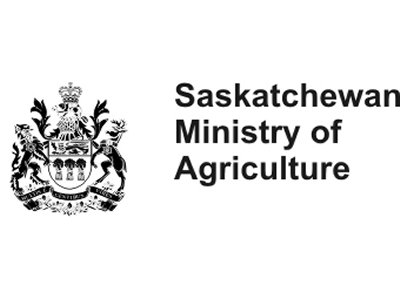by Maddy Lazurko
Ministry of Agriculture
Picking the right mineral for your cattle is essential year-round, but especially during hot summer months. When water has a moderate to high sulfate content, some risks can be mitigated by mineral selection. Sulfate levels increase throughout the summer when conditions are dry. A summer mineral program is important to ensure cows have the adequate nutrients to rebreed and remain healthy. After choosing the correct mineral blend, it is vital to also consider mineral quality.
In cattle diets, macro minerals are required in relatively large amounts. The main macro minerals are calcium, chlorine, magnesium, sulfur, sodium, phosphorus and potassium. Most mineral packages are balanced for calcium and phosphorus and, for cattle, the recommended calcium to phosphorus ratio is greater than or equal to 2:1. To achieve this ratio, different blends are needed to accompany different forages. Cattle require a 1:1 mineral on high legume rations and a 2:1 or 3:1 mineral on pasture or grass forage.
Trace minerals are required in smaller amounts in the diet. This group includes copper, iron, selenium, cobalt, iodine, manganese and zinc. The availability of trace minerals is dependent on their form and the presence of any anti-nutritional factors in the diet. The most common anti-nutritional factor in the summer is an excess of sulfates in the water.
Trace minerals come in three main forms: oxides, sulfates and chelates. The more easily a mineral is absorbed in the small intestine, the better. Oxides are the most stable form of trace minerals and have the lowest absorption rate. Sulfates are the most common form and have an intermediate absorption rate. Chelates are the most available form to the animal and are readily absorbed in the small intestine.
Supplementing with chelated minerals can offset the negative effects of moderate sulfate concentrations in the water. When high sulfate water is consumed by cattle, the sulfates bind to trace minerals in the rumen. The mineral then travels to the small intestine where it is too large to be absorbed, passing through the digestive tract and into the manure. The inability of the animal to absorb trace minerals will cause a mineral deficiency where the animal’s fertility, growth and immune status are impacted. In severe cases, high sulfate concentrations can impact the animal’s ability to produce thiamin, resulting in the development of polio.
Chelated minerals are protected and less likely to bind with sulfates. Chelates can pass through the rumen into the small intestine for absorption. It is important to note that the effects of sulfate levels above 2,000 mg/L cannot be mitigated by the use of chelated minerals.
Improperly managed and monitored water sources can lead to a dangerously high sulfur load, causing a compromised mineral status in the herd. Chelated minerals can help mitigate this risk. For advice on implementing or adjusting a mineral program for your herd in dry summer grazing conditions, contact the Agriculture Knowledge Centre at 1-866-451-2377 to be connected with your regional livestock and feed extension specialist.
18.9 C
Prince Albert
Friday, July 26, 2024


